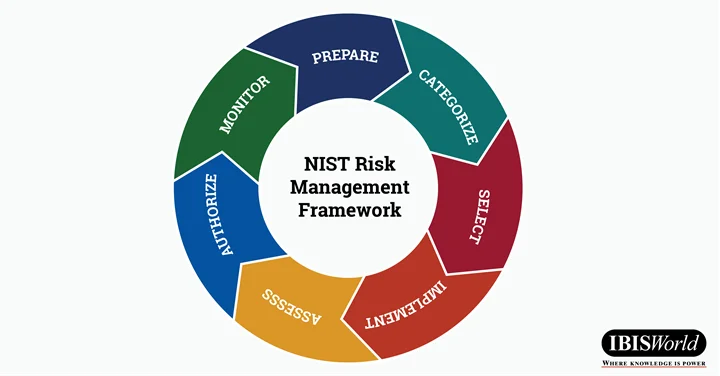Key takeaways
A Risk Management Framework helps your organization prepare for potential problems
The NIST Risk Management Framework is a US government system for creating institutional polices to mitigate risk
A Risk Management Framework is both flexible and cohesive, and a useful tool for organizations of all types and sizes
As the world becomes more complex, so too do the potential risks an organization might face. Modern businesses are heavily dependent on a globalized and digital world, and face risks related to IT infrastructure, global supply chains and the general challenges of an ever-changing economic environment. After all, the more intricate the system, the easier it is for it all to come undone. While we can’t eliminate all risks, threats, and sabotage, we should still take as much control of the situation as possible. Putting systems in place to mitigate the various types of risk is crucial for businesses of any size, which is where a risk management framework comes in handy.
In this article, we’ll break down the 5 Risk Management Components, which are a general standard for creating a risk management framework that can be applied to a variety of risks across different organizations. After describing the general framework, we will discuss the NIST Risk Management Framework in depth and apply it to specific applications and examples.

What are the 5 Risk Management Components?
- Identification
- Measurement and assessment
- Mitigation
- Reporting and Monitoring
- Governance
Risk identification
First, you need to detail the current and potential risks facing your organization. For this component, brain storm:
- What are the threats that could harm your organization?
- What vulnerabilities could be exploited in your organizations security, procedures or IT systems?
- What is the likelihood of each threat occurring?
- What effects would these threats have?
Tip: SWOT Analysis can help identify internal weaknesses and external threats.
Risk measurement and assessment
In the second component of the risk management framework, you’ll create a profile for each of the risks you identified. You can measure these risks in several ways, depending on your organization and industry. For example, competitive intelligence can help you assess risks associated with competing operators. Alternatively, a third-party risk management framework could measure how much money could be lost, while a cybersecurity risk framework could measure the opportunity cost of replacing the current security system compared with improving it.
Once you’ve completed the risk profiles, rank them from least to greatest threat. Keep in mind that risks change as an organization and its operating environment evolves, so you will likely need to repeat this step periodically.
Risk mitigation
With a ranked list of risk profiles, your organization can consider how to mitigate the greater risks, and learn to tolerate the lower ranking ones. For example, an organization creating a supply chain risk management framework would focus on mitigating any potential risks with its biggest supplier, even if it requires devoting less time to its other suppliers.
Risk reporting and monitoring
The fourth component of the RMF requires regular reporting on risk measures. This component allows your organization to maintain an optimal level of risk and ensure that the mitigation strategies considered in the third component are still valuable and effective.
Risk governance
The last component in the risk management framework is the process of governance. In other words, organizations need to create a formal system that employees use constantly to ensure risks are managed appropriately.
What is the NIST Risk Management Framework?
The Risk Management Framework (RMF) was originally created by the United States military to ensure sensitive information systems in the federal government were secure and maintained safely. Currently, the National Institute of Standards and Technology (NIST) is in charge of the Risk Management Framework. NIST updates the framework to keep up with technological progress and the increasing complexity of the modern world.
While the RMF was initially created for the federal government to deal with information technology systems, it’s a useful tool that can be applied to different types of risk for organizations in the private sector. So, how does the RMF work?
The NIST risk management framework is made up of seven steps. These steps create a functioning, institutional system that can efficiently mitigate risks for an organization. Let’s go through each of them.

What are the 7 Risk Management Framework steps?
- Prepare
- Categorize
- Select
- Implement
- Assess
- Authorize
- Monitor
Prepare
Preparation is at the core of the interconnected network that makes up the risk management framework. This step gets your organization ready to adopt a formal strategy by identifying risks, establishing risk tolerance and assigning roles to personnel.
While preparation is the first step, you can repeat it at every stage of the process. If something changes, or you realize your assumptions were incorrect, you might find it helpful to go back to brainstorming.
You can use the Identification component to lay out the possible risks, threats and vulnerabilities and begin to formalize these ideas into a risk management strategy.
Categorize
Categorization is similar to both the measuring and monitoring and the mitigation components, but is more formal than simply listing out the different risks. In this step, you will formally rank the risks from lesser to greater and from least to most important. This structure is then used to create policies to minimize risk for the organization.
Select
In this step of the process, you select the solutions or policies required to prevent or minimize the previously identified risks. These solutions will look different from one organization to another. An enterprise risk management framework might lay out solutions to prevent the theft of intellectual property, whereas a cybersecurity risk management framework will provide measures to fortify a networks firewall.
Implement
The next step is to implement the solutions you’ve selected. This is the part of the risk management framework where you turn your thoughts into actions. Be sure to document the process and procedures so the selected solutions become formal organizational polices.
Assess
At this stage of the risk management framework, you assess the implementation of your risk management solutions. The aim of this step is to verify whether the solutions were executed correctly, and, more importantly, if they created the desired results. If not, you will need to address any weaknesses in risk controls.
Authorize
In the authorization step, you will give an executive or senior member of an organization an overview of the plan and assessments to receive their formal approval that the system is working as intended. Additionally, the senior members should verify that the risk management framework is in line with laws and organizational policies.
Monitor
The last step of the risk management framework can, like the Prepare step, happen at any time. Your organization should continuously monitor the systems set in place to ensure that they are still relevant, effective and working as intended. If any doubts or new considerations arise, those in charge of maintaining the risk management framework should go back to the prepare step.

How can we use the NIST RMF for Enterprise Risk Management?
The NIST Risk Management Framework is a great tool for enterprise risk management (ERM), since ERM deals with mitigating risk at an organizational level. ERM can also be a vital step in strategic planning as any decisions made should consider the needs of the entire firm and not just individual segments of the organization. The NIST RMF ensures the entire organization is considered, and provides a model for creating institutional level policies and regulations.
Using the Identification component during the Prepare step allows your organization to focus on both internal and external risks. An internal risk could be an outdated information system that happens to only affect one department. An external risk is a general problem that might affect the organization as a whole, as well as the various departments internal structures.
Moreover, at an external level, risks can apply to the various business segments in different ways. For example, a change in demographics creates different risks for the sales and marketing department than for the finance department. Similarly, adding Industry Research to the identification component of the NIST risk framework makes the Risk Analysis more effective. The more information you have, the better decisions you can make. If demographic or economic factors change, applying in-depth industry research will help connect the immediate facts with overall industry trends.
How can RMF be used for Third-Party Risk Management?
Third-Party Risk Management (TPRM) seeks to reduce risk relating to external parties such as vendors, suppliers and contractors. The full scope of the NIST RMF can help minimize this type of risk. A lot of factors are out of your organization’s control when dealing with third parties, so controlling the ones you can is vital. This is where a comprehensive third-party risk management framework is key.
If your organization is deeply dependent on a supplier, you face huge risks if they can’t follow through. Being vigilant with the mitigating and reporting and monitoring components is essential, as your organization needs to be ready for any unexpected changes to reduce third-party risk.
The NIST risk management framework is useful for creating and sustaining risk management organization policies. Organizational processes that are formalized and made routine reduce uncertainty, which is very helpful in TPRM.
How does RMF apply to Cyber Security Risk Management?
As more institutions take up operations in the digital realm, organizations have an ever-increasing need for cybersecurity. Organizations of all sizes, from the corner store bodega to a Fortune 500 company, require a robust cyber security risk management framework.
Many types of cyber security risks exist and can vary from one organization to another. System failure is a major risk, and one that applies to all types of organizations. Being vigilant and conducting consistent checks reduces the likelihood of system failure. The NIST RMF is a great tool to mitigate the risk of system wide failure of information networks.
Final thoughts
You can’t make your operations risk free, but there is good news: your organization can do a lot to minimize risks. A robust risk management framework, such as the NIST RMF, is both flexible and cohesive, and is a useful tool for organizations of all types and sizes.
Source from IBISWorld
Disclaimer: The information set forth above is provided by IBISWorld independently of Alibaba.com. Alibaba.com makes no representation and warranties as to the quality and reliability of the seller and products.




